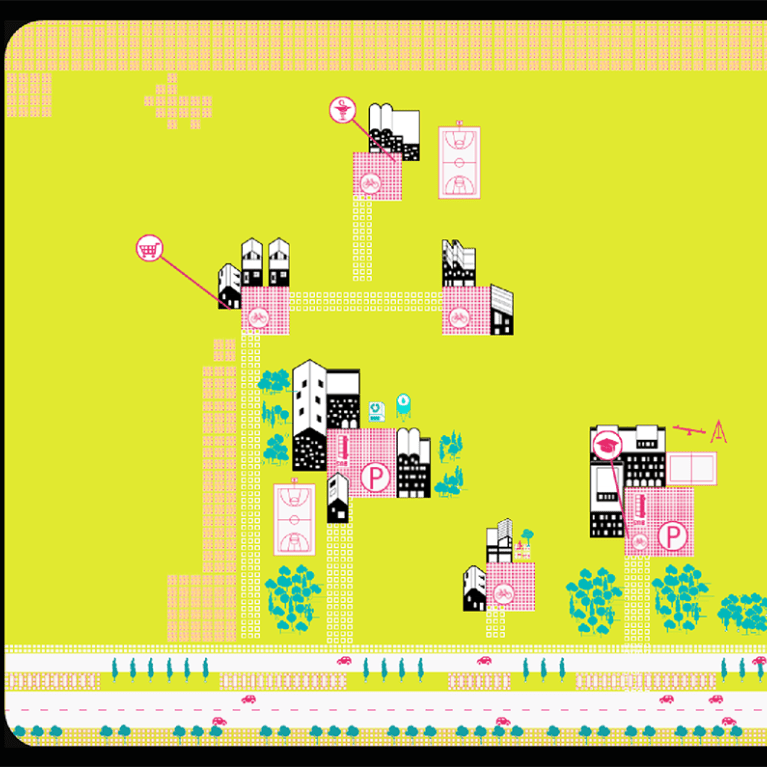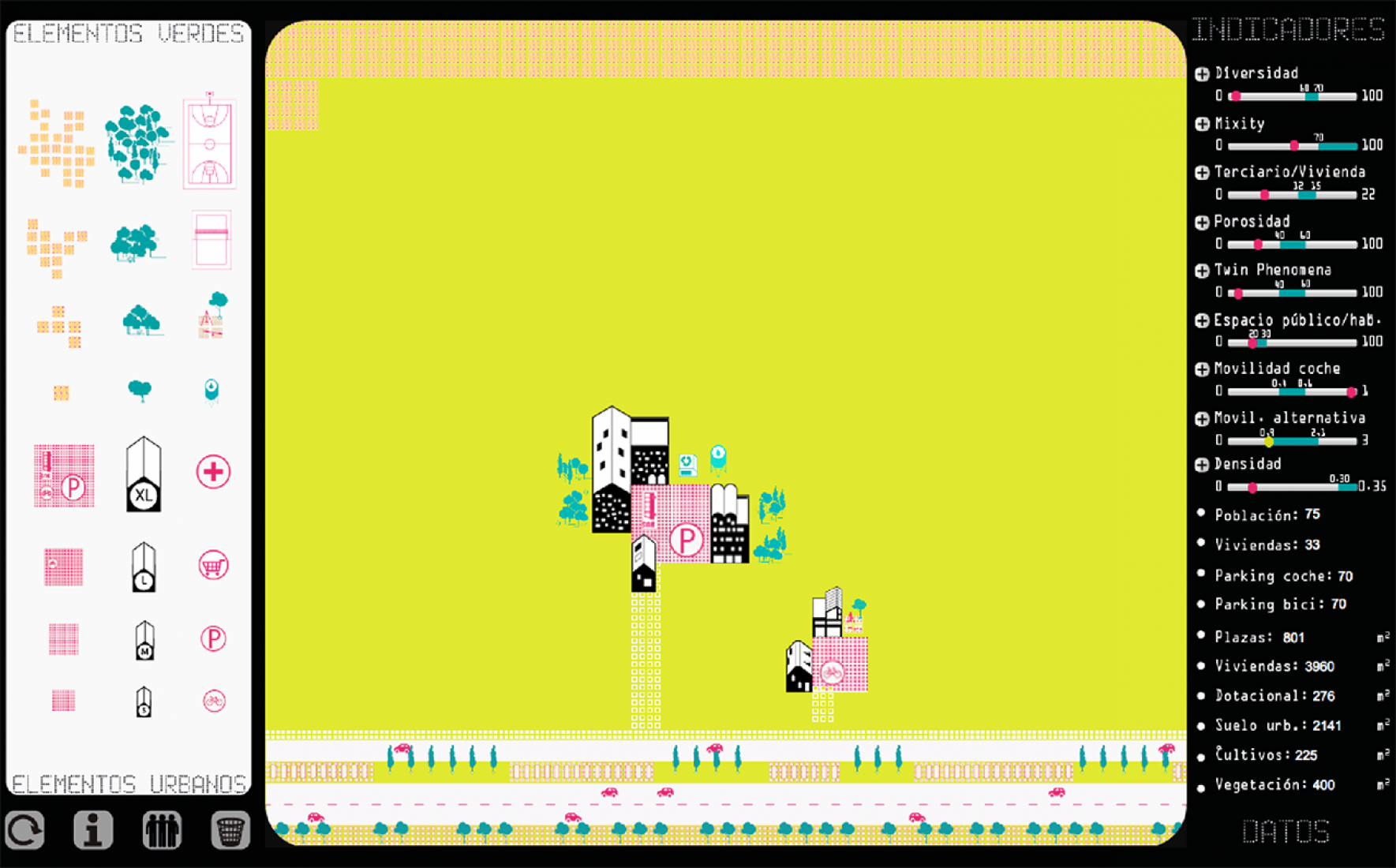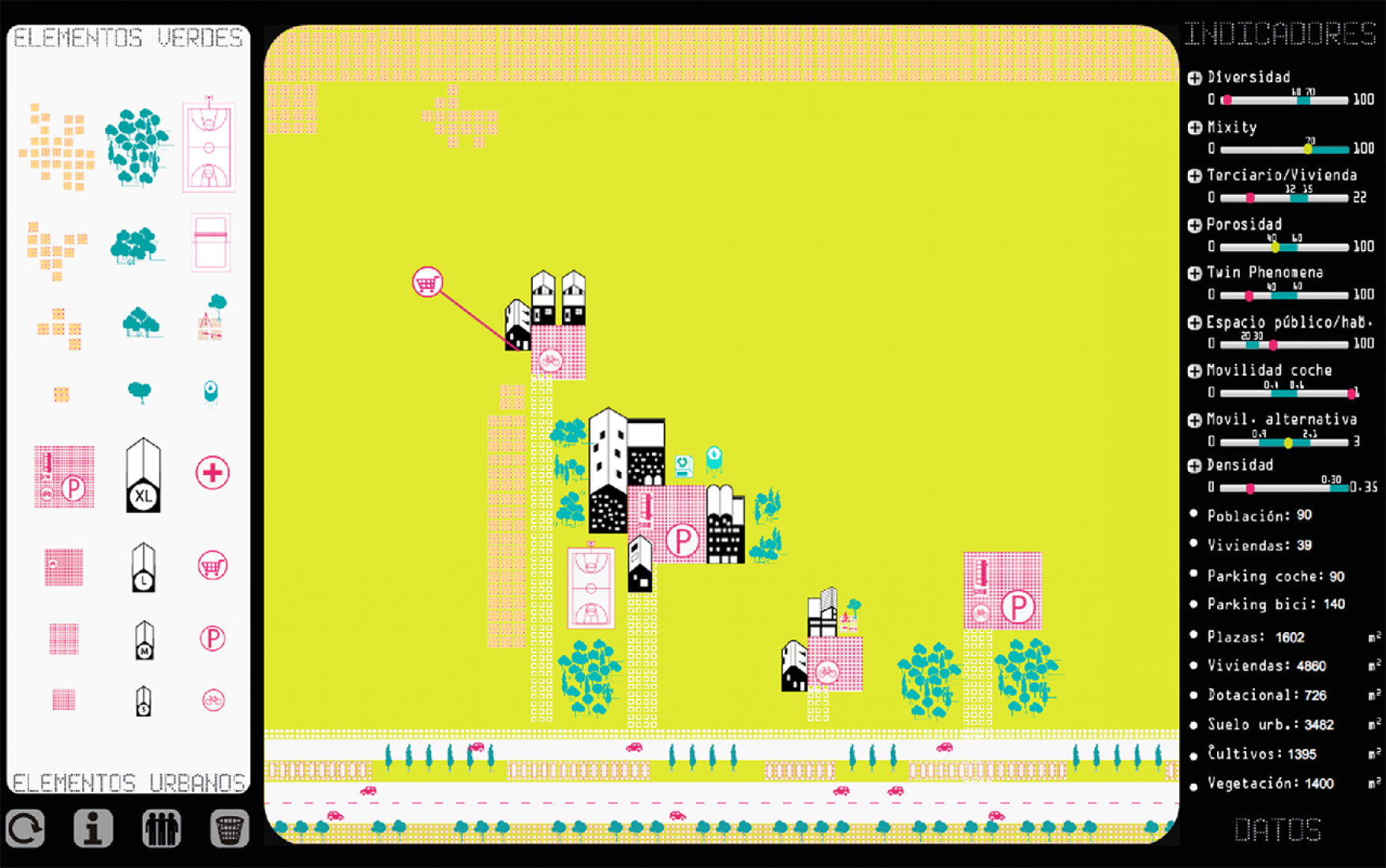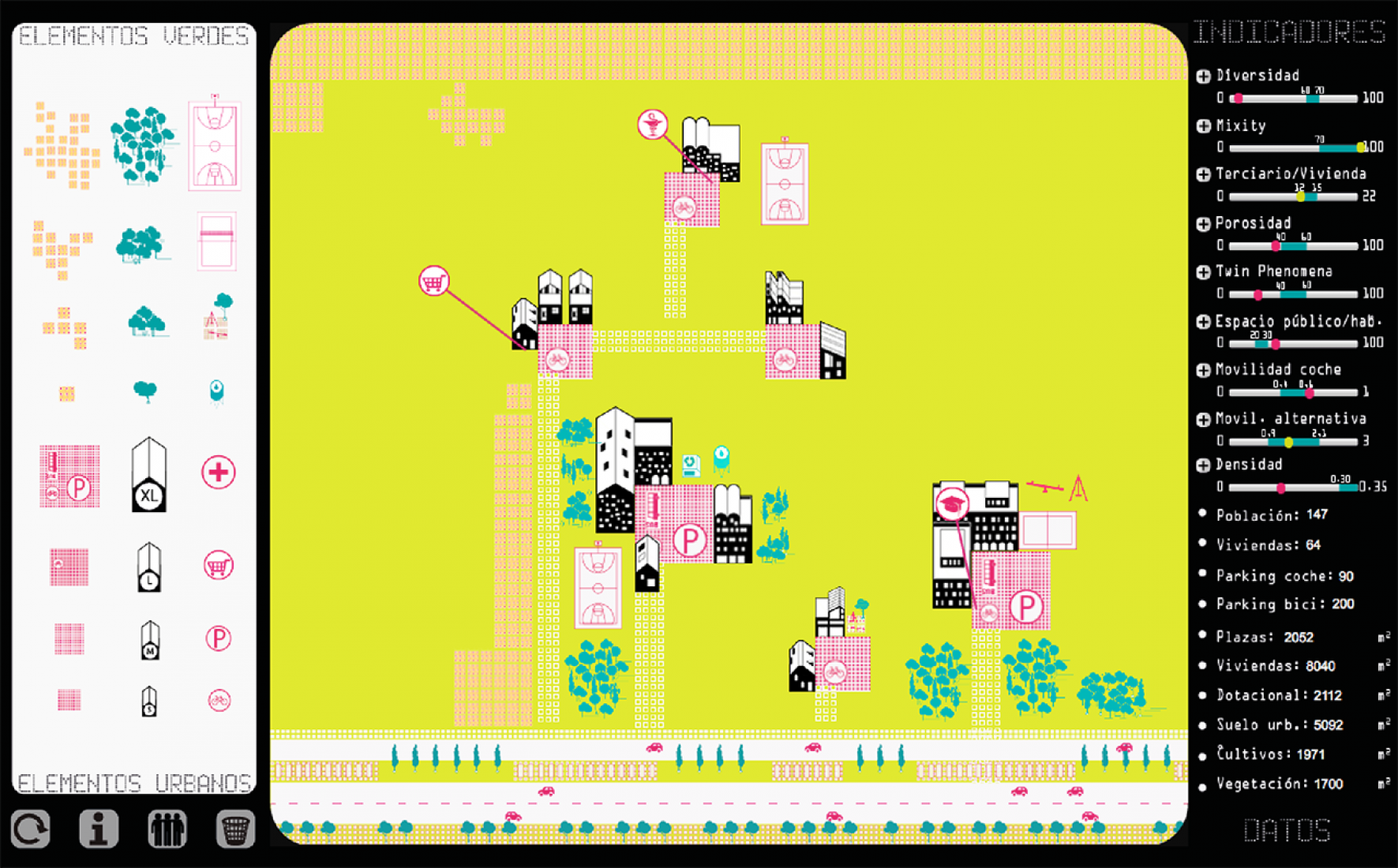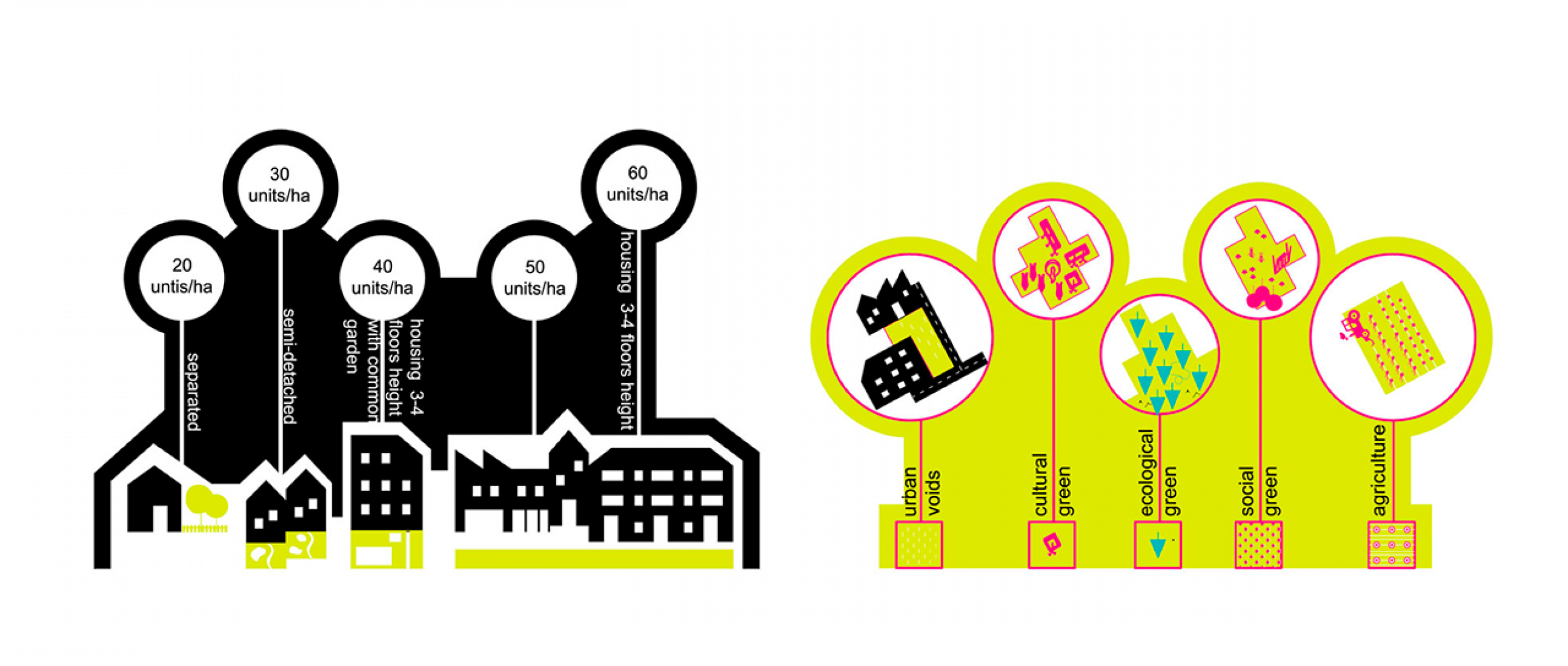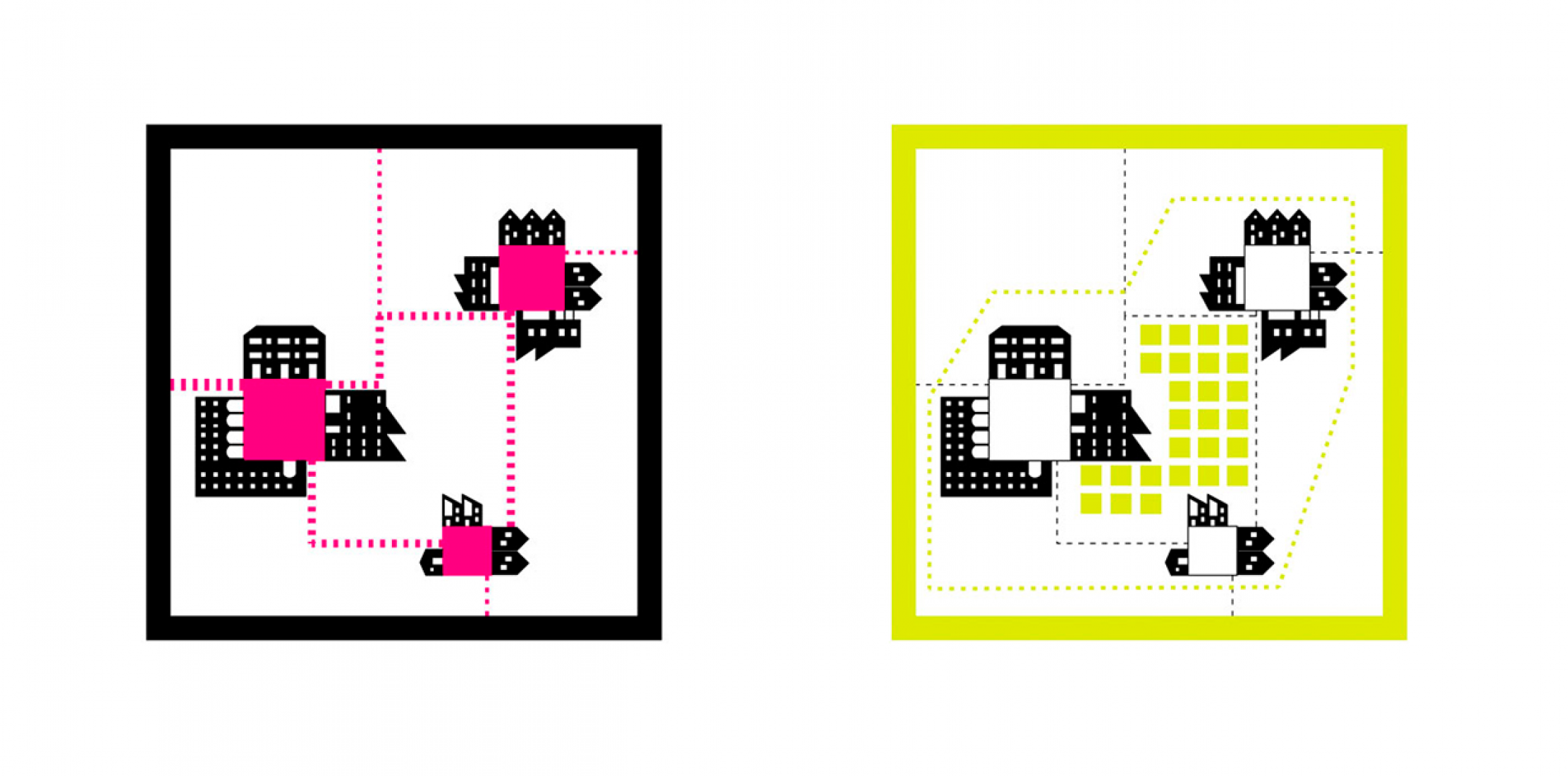The architectural studio Arenas Basabe Palacios won the first prize with a densification proposal with a network of public spaces that manage the constructions around them. The rules defined for that project (maximum buildable area, porosity, etc) are now the variables that make up the virtual model TWINPHENOMENA, a software that enables an intuitive visualization of how affects the design of the city in the parameters that make it habitable.
Description of the project by Arenas Basabe Palacios arquitectos
New European suburban developments are ruled by the definition of a closed policy, a parcel-based and named-streets planning. This invasive action fragments the landscape from its stage Zero. The process is often opaque: planning is defined primarily by the city council or by large-scale developers and their own interests. The resulting planning in these cases is indifferent to the real needs and variable interests of the citizens. Being aware of this context, we have carried out research on alternative tools to manage a more democratic urbanism, open to multiple actors: not only city councils and large developers, but also small investors or even individuals must have access to the production of the city.
As a specific solution to this global concern we have developed the software ‘Twin Phenomena’, a virtual model for an innovative ecological and democratic growth of the city of Höganäs, in Sweden. This Case Study is based on the internationally awarded project ‘Twin Phenomena’, which proposes to reconcile both urban and rural local characters through a strategy of densification in time, respecting the small scale of the surrounding buildings and integrating adjacent agricultural landscape within the new urban fabric. The result is a porous city: a sustainable, low footprint intervention that reduces environmental impact.
In its conception as a videogame, ‘Twin Phenomena’ interactively recreates the densification process and evaluates the appropriateness of the intervention, which pursues to accomplish the optimum in all indicators. To achieve this the game must be played, learning and making mistakes, building and demolishing, understanding the values the indicators bring to the new urban development.
As a virtual model, ‘Twin Phenomena’ is a first step towards the didactic training of all agents involved in the collaborative planning process that will take place in Höganäs: representatives of the city council and the citizenship, investors, agents and a group of multidisciplinary technicians (architects, urban planners, sociologists, expert engineers in mobility, energy…) will recognize through the game all different qualities the fabric must achieve (diverse, porous, multifunctional…) and will understand the syntax or rules to get it.
On the evolution of this beta version, indicators will be regulated by the players, who will be able to verify actions such as increasing density of the area, varying building scales and heights, calibrating the mix of functions or altering the ratio of developed lands and green areas. The software will analyze, register and visualize those actions in real time, showing positions, needs and interests of the different stakeholders (municipality, developers, citizens and technicians) through negotiation tables and collaborative workshops in order to define a more democratic urbanism.
